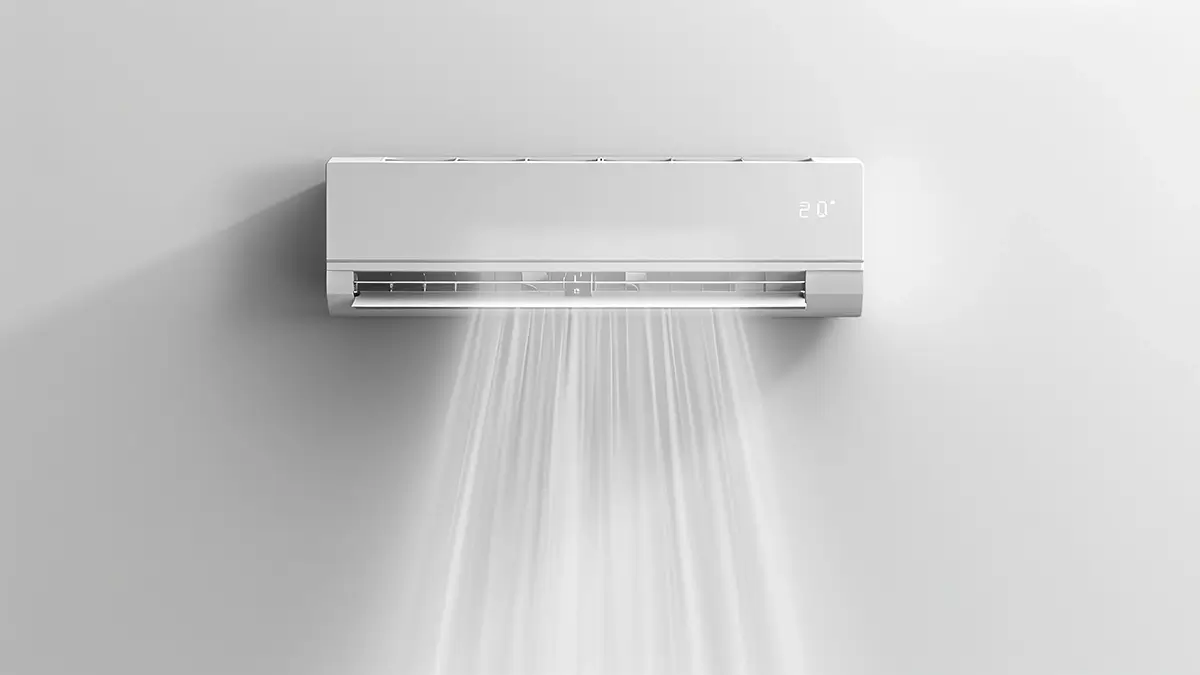The categorisation of air-conditioning units is governed by criteria we have identified. Air-conditioning systems can be divided in terms of the mode of consuming energy, the number of outdoor units, portability, and the mode of operation.
As far as the classification based on the MODE OF ENERGY CONSUMPTION goes, the following can be cited.
- Direct evaporative air-conditioning systems, in which the cooling of a room results from absorbing the energy from the room directly by the evaporating refrigerant. The units used in such a system are small, quiet, and inexpensive, but they cannot be installed everywhere.
- Ice-water systems, in which heat from rooms is collected by water,
which transfers heat to the evaporating refrigerant. The units used in these systems are larger and more expensive, but they can be used in virtually
any conditions, e.g. in tall buildings.
Another criterion for the division of air-conditioning systems is the NUMBER OF OUTDOOR UNITS. Direct evaporative air-conditioning systems feature the following types.
- Mono units – devices consisting of a single module, mounted in a window,
on a wall, or on wheeled equipment with a special pipe going out of the window. Mono units are low-power devices designed for small rooms.
- Split-type air conditioners – these are units comprised of two modules:
an outdoor unit and an internal unit connected by a copper pipework
and an electrical system. SPLIT units are low- and medium-power units designed for providing air conditioning in small and medium-sized rooms.
- MULTI-Split-type air conditioners – units consisting of several indoor elements (up to 5), connected to a single outdoor unit through copper pipework
and an electrical system. MULTI-SPLIT units are medium-power systems designed for providing air conditioning in large rooms or in a number of small rooms.
- VRF systems – the most-extensive direct evaporative air-conditioning system, with which up to 3 units can be connected to a several-dozen outdoor units
(up to 64). VRF systems are medium- and high-power air conditioning systems designed for providing air conditioning in entire buildings.
Depending on their PORTABILITY, we distinguish the following types of device.
- Stationary air conditioners – a typical solution used in most buildings, where it is possible to install air conditioning permanently.
- Portable air conditioners – these are usually fitted with castors, which makes them ideal for rooms under low- and medium-heat loads, especially if there is
a need to relocate the air conditioner, or when stationary air conditioning cannot be used.
Taking into account the MODE OF OPERATION, we distinguish the following types of air conditioner.
- Inverter air conditioners – these constitute a state-of-the-art unit designed
for rooms with variable heat loads, and an extremely energy-efficient solution.
- ON-OFF air conditioners – these are characterised by simple design and uncomplicated control. It is an efficient solution suitable for rooms which require high and constant cooling or heating capacity.

 Guide
Guide  TYPES OF AIR-CONDITIONING UNITS
TYPES OF AIR-CONDITIONING UNITS 
 Back
Back




